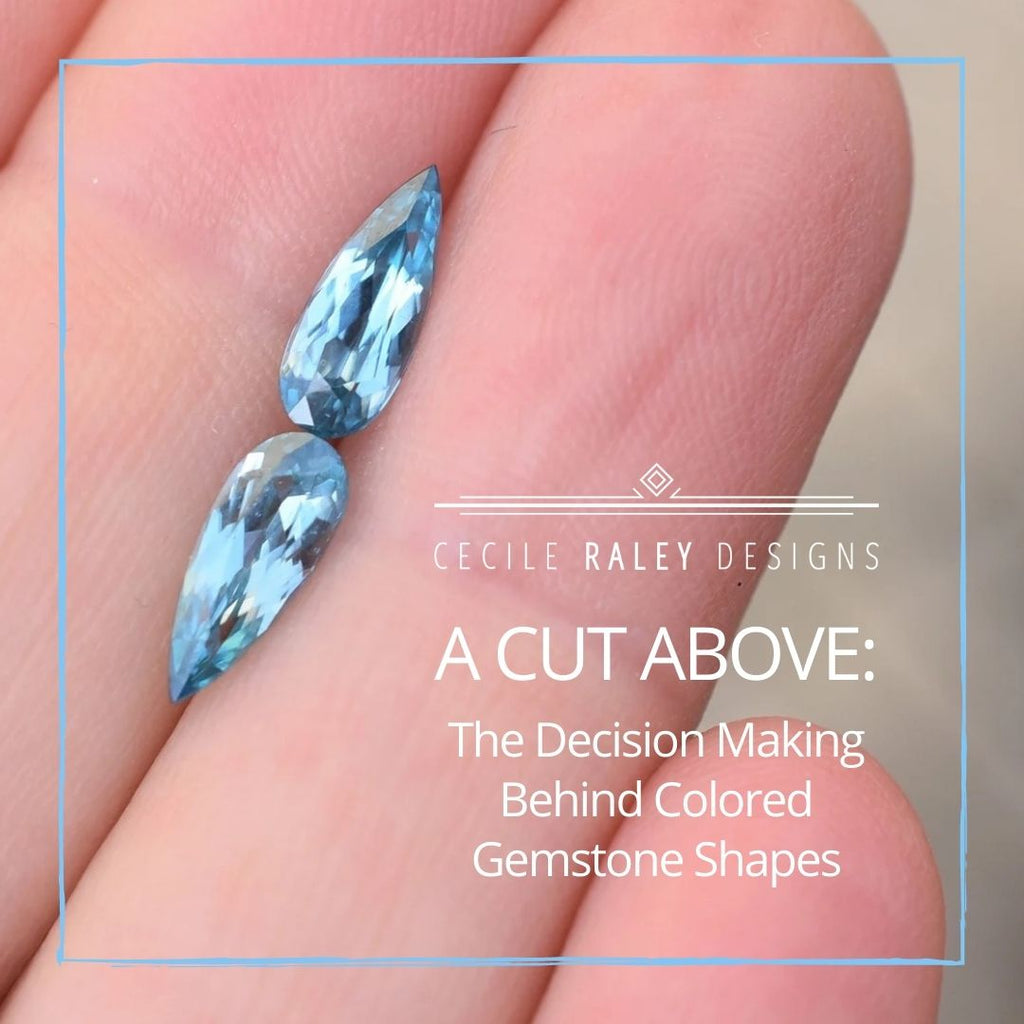A Cut Above: The Decision Making Behind Colored Gemstone Shapes

It’s schizophrenic really, and it’s true of 90% of colored gems; they don’t fit into prefabricated settings, so you end up having to get settings made from scratch, which adds to the cost. Back when I first started on Etsy, it was difficult to communicate this to buyers. Foreign Etsy sellers would sell the gems loose and clients wanted me to set them to save money, not because they wanted to spend more, and this was one of the reasons we stopped setting customers’ stones.
Most of my clients now buy gems because they want to own rare collectors’ gems, and so the problem persists to this day. I learned early on that if we wanted to work with colored stones, we had to make our own settings, and my line partially evolved out of that necessity.
But, you might ask, why can’t the gems just be cut to fit? The answer has two parts, one part has to do with the settings and the market in general, the other has to do with the special nature of colored gems.
Let’s start with the settings. Commercial settings such as those from Stuller are made for diamonds because diamonds dominate 95% of the jewelry market. Synthetics are next, and only after that, colored stones. According to one of my setters, Stuller alloys are also very hard because it yields a better pre polish. This works well for diamonds but is not good for the softer colored gems. But more importantly, the prongs are often too short so they cannot fold over the stone. Finally, diamonds are calibrated and can be supplied in any size. Especially small ones. That is not the case with colored stones with the exception of amethyst, citrine, topaz and a few others.
The rest of the colored gems are cut with a different objective. They are cut to optimize the rough. This means two things: they are cut to get the most amount of gem out of the rough stone (especially the expensive ones!) and to bring out the most beauty.
For example: Ceylon sapphires are often step cut with the color emanating from the culet so that you can only see zoning from the back and not the front. But that means they often have a heavy “belly.” Portuguese cuts are deeper also, and for many lighter colored gems such as mint garnet, this cut brings out the color and adds brilliance.


Emerald cuts and long pear shapes are often used for tourmalines because the rough has a long crystal structure. This is true of emeralds also. Emerald rough from Chivor, Colombia, for instance, is often thin and long. The darker emeralds from Muzo, by contrast, are sometimes cut flatter because otherwise they will be too dark.
Last but not least, Brett Kosnar’s “flower” style cuts are a great solution for flat rough like some lndicolite tourmaline and Mozambique Paraiba.
It’s fair to say therefore, that the cutter has a different objective than the jeweler. In addition to the above, she or he is avoiding zoning and window, cutting around inclusions, while at the same time considering cleavage, axis, and the overall softness of the stone. High end gemstone rough such as emerald and paraiba are often preformed by an experienced pre former for that reason – this involves cutting the basic shape of the gem to provide the cutter with a guide as to how to showcase the material in the best way. How the gem will be set is not particularly relevant in that process.
So, as designers of colored gem jewelry we have to get inventive and, in my view, it is up to us to close the gap by being imaginative and by designing around the gem. Longer prongs are a definite but that’s not enough. Prong placement matters too when corners have to be protected (a lot of our designs involve double prongs, or special beads placed to help the setters). We must also consider the kind of metal we want to use – white gold can be an unwise choice for Paraiba, for example as it’s a very hard metal and Paraiba is a very soft stone, as well as considering what colors we think will highlight the gems most successfully.
Here are some pretty examples:

Cushion Cut, Untreated Peach-colored Imperial Topaz, 9.22 x 4.26mm .93 cts

